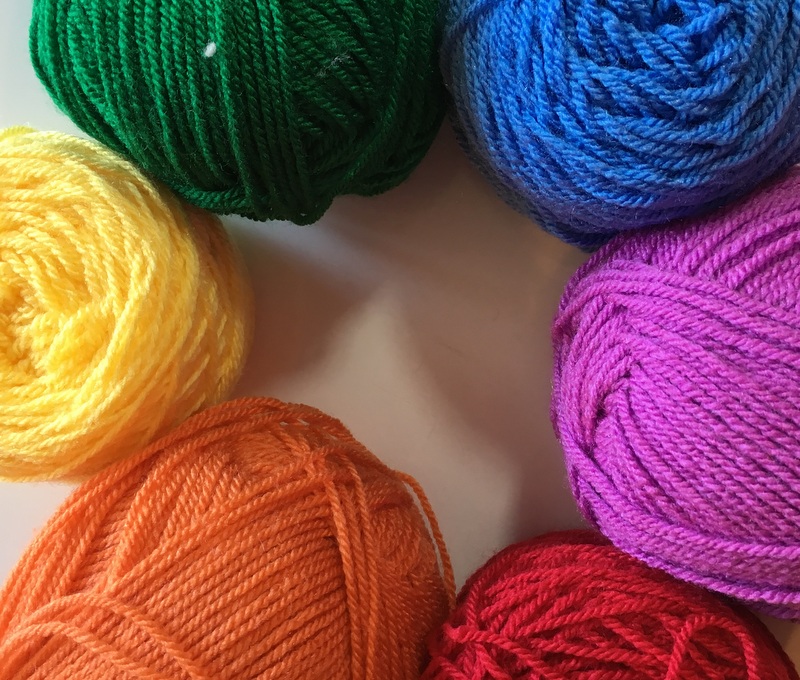
This week we are talking more about color theory and yarn. This is still a really hard topic to write about. I’ll say it again. Color is complicated. Color theory is making advances and changing. Computer drawing, printing, and photography have really changed how we see color. Adding simple filters on your phone camera (or within the editing platform after you take the photo) can warm up or cool down the pictures. This has made us more aware of how we can cause changes in color. The traditional color theory described in this post is tried and true over time. These are traditional color schemes as taught to most interior design and art students.
Traditional Color Theory
Take a look at this yarn color wheel in the photo below.
These are the three primary colors: yellow, red and blue. You can create all the other colors from these three basic colors. (It is different with computer ink, but don’t get hung up on the difference — we are talking about yarn today.) You can mix yellow and red for orange; yellow and blue for green; and blue and red for red violet (or purple). These mixtures are called secondary colors. Here they are placed in the color wheel.
Black and White
Black is a combination of all colors (for the most part). It can also be very, very dark brown, green or blue, but it is mostly super-dark brown. You can tell in these two skeins of yarn one is browner and one is bluer. This is good to know if you are trying to match yarns and don’t know the brand of the yarn you are matching.
White is the reflection of all colors.
Complementary Color Schemes
The complementary color scheme is the two colors directly opposite each other on the color wheel, as represented in these photos:



Analogous Color Schemes
Analogous color schemes are the colors right next to each other on the color wheel. Here are a few examples:

Here’s another color scheme that is analogous.

This color scheme is also analogous:
Color Theory in Action
As you can see, having a basic knowledge of color theory can help you when you are picking yarn for your next afghan. Of course, once you know the rules then you can bend them a little to make your blanket more interesting. I hope this helps you create beautiful crochet and helps you understand why some color schemes work better than others.
Come back for even more about color theory in yarn next week!
What I’ve Been Up To
Life has been interesting. (When isn’t life interesting?) I have been busy writing crochet patterns and getting them ready for release. If you are reading this then you might have noticed some changes to the website recently. I added a shop to the blog, which provides access to all the patterns available through other venues. I have been busy updating all of my patterns. It has been a huge thing that has kept me really busy. We have also been doing a general spring cleaning and updating the blog.
The newest baby blanket pattern is almost ready for release! It will be in the shop for a free download since it is inspired and derived from one of my favorite tv shows.

Talk to you later,
Karen







Omg! Thanks for the color theory lesson. I am a wedding floral designer and a crocheted. So my life revolves around color. I have always said color theory should be a required course in school. I hope this post helps others understand color better! Great job!!!